Lost Tree from the Bible Rises from 1,000-Year-Old Mysterious Seed
Scientists have managed to grow an ancient seed found in a cave just north of Jerusalem into a long-lost tree species, one with likely biblical significance.
The now three-metre-high tree, which has been brought back to life with great effort over the past 14 years, turns out to be a once extinct relative of the frankincense and myrrh family.
Researchers now suspect that the tree, which they named ‘Sheba’, is the same species that produced the highly prized medicinal extract ‘tsori’, first referenced in the Book of Genesis and later in the accounts of Jeremiah and Ezekiel in the Old Testament.
“The identity of the biblical ‘tsori’ (‘balsam’ in English) has long been a matter of debate,” they said. “There are no descriptions in biblical sources of the tree that produced tsori.”
But “Sheba” is just the latest in a series of botanical resurrections this team has demonstrated in the Holy Land, including the 2005 germination of an ancient date palm, nicknamed “Methuselah,” from a seed dating back to the time of Christ.
‘Sheba’ (pictured above) is just the latest in a series of botanical resurrections to emerge from the Holy Land in the 21st century, including the 2005 emergence of an ancient species of date palm nicknamed ‘Methuselah’, whose seed dates back to the time of Christ.
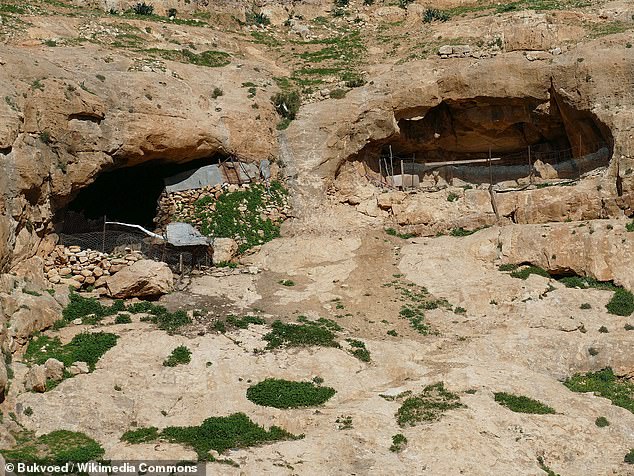
The now 10-foot-tall tree — painstakingly brought to life over 14 years — was grown from an ancient seed found during an archaeological dig in a cave just north of Jerusalem. Pictured above are two caves in Wadi Makukk in the northern Judean Desert, near where the seed was found.
The ancient Seed of Sheba was first unearthed during a 1986-87 archaeological dig at Wadi el-Makkuk, a winter water channel in the northern Judean Desert. The canyons contain over 374 known caves.
The 200-metre-high cliffs of this harsh limestone and dolomite gorge were used by monks from Byzantine times and as ‘refuges’ during the Jewish people’s wars against Rome (66-135 AD) in the decades shortly after the death of Jesus.
The seed, which is thought to be from the genus Commiforswas discovered in ‘Cave 1’ along an 8-meter high cliff in the lower Wadi el-Makukk region.
“The cave,” Dr. Sarah Sallon and her co-authors noted in their new study, “contained two natural holes that were used for burials but showed signs of theft by grave robbers.”
But despite this ‘considerable disturbance’, excavators were able to identify beads, fabrics and woven ropes from the Roman period, along with about a dozen other ancient seeds – mainly from fruiting date palms Phoenix dactylifera And Balanitis aegyptica.
Dr. Sallon of Hadassah University Medical Center, who also led the effort to revive Methuselah and other ancient plants from this find, suspects the seeds were left by an animal.
“We don’t think it was brought by a human,” she told the Jerusalem Post‘The cave was a burial place and uninhabited.’
In 2009, Hebrew University archaeology professor Joseph Patrich gave Dr. Sallon and her team the seed from which “Sheba” would emerge, as well as two date seeds from Cave 1 for their experiments.
That careful horticultural work, now published in the magazine Communication Biologyhas yielded sufficient mature leaf material for chemical and genetic analysis.
Dr. Sallon and her team turned to both DNA sequencing and so-called ‘phylogenetic’ analysis in an attempt to determine where ‘Sheba’ might fit into the lineages of the frankincense and myrrh family of plants, technically known as Burseraceae.
But unlike the famous frankincense and myrrh given in the New Testament as a gift in honor of Jesus’ birth, the possible Commifors Subspecies most similar to ‘Sheba’ were not known to be particularly fragrant.
“I sent samples (leaves, bark resin and more) to Dr Gavin Flamatti of the University of Western Australia, an expert in identifying odorous compounds released during combustion,” Dr Sallon said.
“There were no fragrant aromatic substances released,” she explained, “but they did find an abundance of highly medicinal substances.”
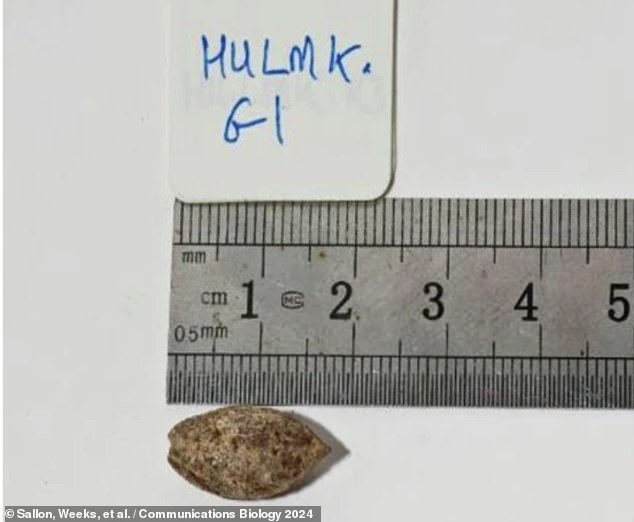
Above is an image of the 1,000-year-old seed from which the plant ‘Sheba’ is said to grow. Dr. Sarah Sallon of Hadassah University Medical Center, who also led the revival of the ancient date palm ‘Methuselah’, suspects that the seeds were left by an animal
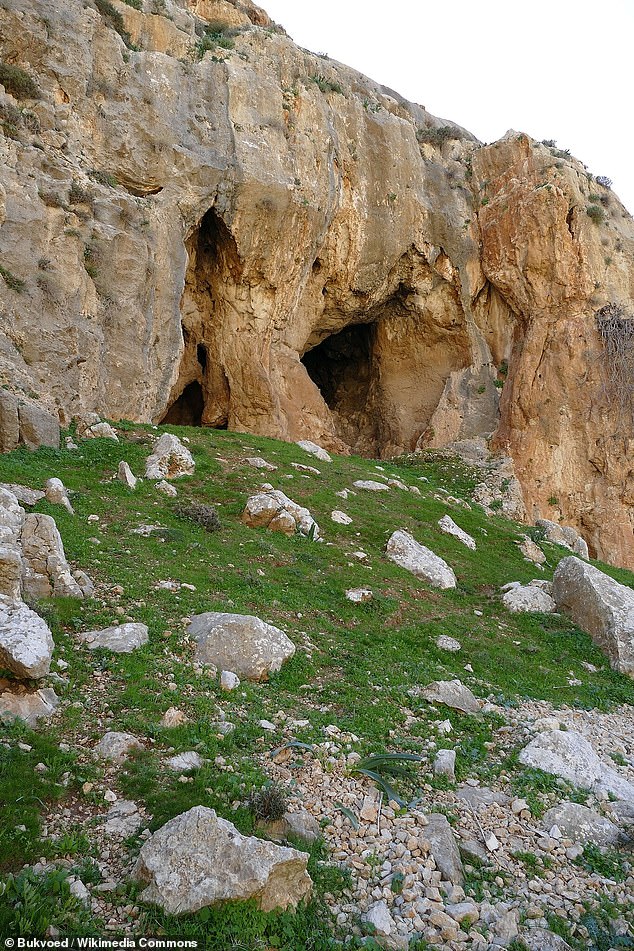
Above, more of the 357+ caves in Wadi Makukk in the northern Judean Desert – near ‘Cave 1’ where the ancient seed was found
“I thought at first it was the Judean balsam,” said Dr. Sallon, “which was famous in Greek and Roman times for its fragrant resin.”
But Dr. Flamatti’s work and the efforts of the rest of the team pointed in a different direction, to a supposedly extinct “species of Commiphora that was once native to the region.”
In total, the study involved an international team from Europe, Australia, Israel and the US, including a biologist from the Botanical Research Institute of Texas.
Analysis of ‘phytochemical’ compounds – which the plant produces itself to resist local fungi, bacteria and other biological threats – also helped Dr Sallon’s team uncover Sheba’s identity.
Among these molecules they found ‘pentacylic triterpenoids’, which are also found in other Commifors species used in ancient burial rituals.
They also discovered “high levels” (30 percent) of squalene on the Sheba leaves, a compound they report has long been found in nature. ‘associated with positive effects on skin physiology, including soothing, antioxidant, moisturizing and antitumor activity.’
The team even found a series of so-called glycolipid compounds in the resin of ‘Sheba’ that may be related to other Commifors resins that have been shown to have ‘potential anti-cancer activity’.
This wave of medicinal potential led Dr. Sallon to speculate that the plant could be the source of the Biblical ‘tsori’, referred to in the first book of the Bible.
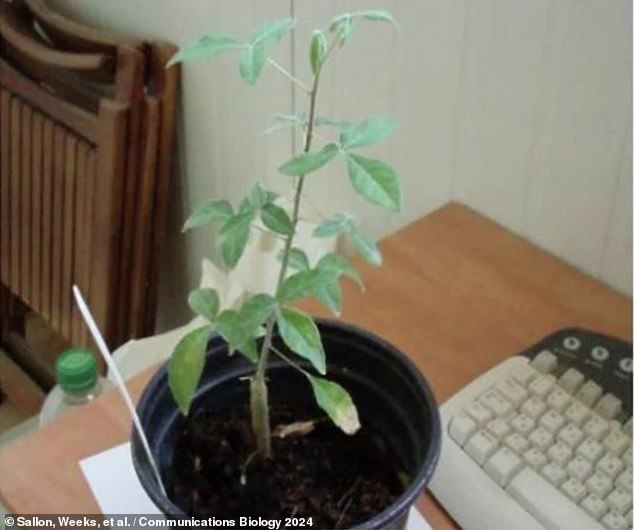
Above is Sheba in its early days, growing from the 1000 year old seed found in ‘Cave 1’
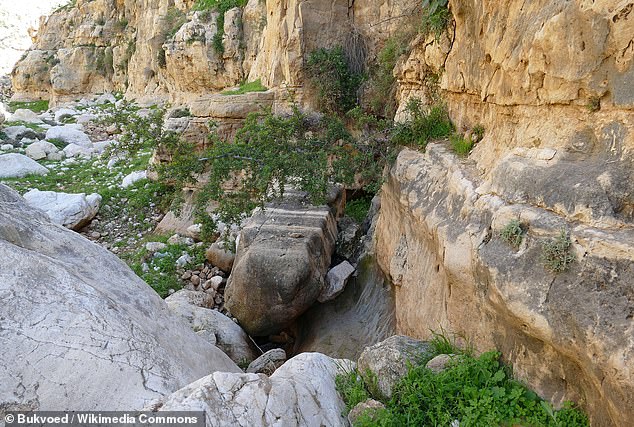
In Biblical texts, the ‘tsori’ resin was associated with the historical region once known as Gilead, which stretched east from the Jordan River to the northern end of the Dead Sea. ‘Cave 1’, along the cliffs of Wadi el-Makkuk (above), falls squarely within this region of the Holy Land.
“Could the discovery of “Sheba” provide a resolution to the many controversies, contradictions, and linguistic misinterpretations that have historically surrounded both the biblical “tsori” and the Judean balm?” the team asks in their new paper.
Aspects of the geography where the ancient seed was found also played a role.
In the Bible and other ancient texts, the ‘tsori’ resin was associated with the historical region once known as Gilead. This region stretched east of the Jordan River, between the Yarmuk River and the northern end of the Dead Sea.
Cave 1, along the cliffs and water channels of Wadi el-Makkuk, is located precisely in this region of the Holy Land.
This Dead Sea-Jordan Rift valley, the team noted, was “anciently a mountainous, richly forested area with a fertile valley floor (ghor) below that was intensively cultivated throughout history.”
The Dead Sea-Jordan Rift Valley is the ‘northernmost point’ of a geographic zone that ‘has many Commifors “The area is a species found in the dry/semi-arid regions of subtropical Africa, Arabia, the Thar Desert in India and West Pakistan,” Dr. Sallon and her team said.
‘We believe these findings support our hypothesis that “Sheba” (…) may represent an extinct taxon once native to this region, whose resin “tsori” mentioned in Biblical texts was valuable and associated with healing, but was not described as fragrant,’ they concluded.
However, additional research is still needed to confirm this hypothesis, partly because the Sheba plant has not yet flowered—a process that will provide even more clues via bud formation. reproductive material that scientists can subject to further study.
But Dr. Sallon, who has spent decades hunting down long-lost plants with potential medicinal properties for today’s humans, told reporters she’s excited about the challenge.
“I like solving mysteries,” she said.
